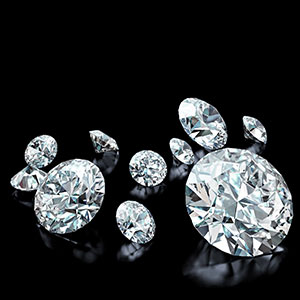
The average price of natural diamonds may increase as much as 15% this year, as sanctions against Russia constrain supply, and consumer demand continues to be “buoyant,” according to a new report from Bank of America Global Research.
While some have thought that, post-COVID-19, consumer discretionary spending will shift back to travel, the bank’s analysts predicted that jewelry spending will hold up.
“[There] is a lack of substitutes for luxury spend amongst consumers, with tourism unlikely to rebound to pre-COVID levels [this year] amid ongoing travel restrictions,” the report said. “[D]iamond demand will remain buoyant. This appears to be coming through at auctions, with strong diamond tender prices reported by key players recently.”
The report predicted that diamond sales will increase 10% this year, driven by strong demand in Asia and the United States. The sole exception is China, where demand has been dampened by that country’s tough anti-COVID policies.
On the other side of the equation—supply—the report estimated that global diamond production is currently at its lowest level since the global financial crisis in 2008. It expected overall supply to remain stable over the next few years, with production decreases forecasted in South Africa and Canada, possibly made up by production jumps in Botswana and Angola. It noted that sanctions on Russian gems could exacerbate current shortages, depending on how many of those gems end up finding their way to market.
In particular, the bank anticipates “shortages” in the small diamond sector, given the closure of Australia’s Argyle mine, and the rebound of the watch industry, as timepieces are often adorned with small gems.
The report noted that diamond exploration budgets have been cut.
“A diamond project now takes 10-15 years from exploration to first production, largely due the need to deliver projects in an ESG [environmental, social, and governance]-friendly manner,” the report said. “Less exploration [means] less supply additions over the next 10 years.”
(Photo: Getty Images)
Follow JCK on Instagram: @jckmagazineFollow JCK on Twitter: @jckmagazine
Follow JCK on Facebook: @jckmagazine





